In a previous article, http://www.searing.photography/testing-lpd-vs-pf106/ I explored the differences of two paper developers on 3 different papers and found there was little difference in the tonality based on developer. There were differences in exposure time required to achieve max black and some differences in shadow detail but I can not attribute all of that to the developer.
So this weeks experiment was to take those same 6 sheets and tone them completely in Kodak Rapid Selenium Toner (KRST) to see if there were tonality differences. I used my 8 month old 1:6 mix of selenium but added 100ml after a couple of tests so it is more like 1:5 . The paper tone did change from neutral grey to a dark purple/chocolate on all three papers. The Ilford MGFB Warmtone and Bergger CB Warmtone are very close in tone to one another with Ilford MGFB classic being slightly more neutral. The amount of black in the image affects the brown/purple-ish cast. An over exposed dark image gave very deep chocolate tones vs a very under exposed test sheet gave a purple cast in the under developed shadows. I suspect that the age of the selenium created more purple tones than warmer chocolate tones but earlier experiments were nearly same tone.
So what about LPD vs PF106?
All tests were toned to completion for 5 minutes. Most of the papers had noticeable color shift around 2mins and 30 seconds with overall color shift occurring within 4 minutes. Color is very purple when wet but dries down to less of a purple cast. Prints were washed for 30 minutes after toning.
Ilford MGFB Classic – there is a very slight tonal shift to the purple side on PF106. Classic was a tad more neutral in tone in LPD. LPD is preferred tone.
Ilford MGFB WarmTone – No perceptible difference between the tonality of the two images. However I do feel that the LPD image had darker shadow detail tones than the PF106 image. This may also be due to subtle differences in printing initially. The PF106 wins in this case.
Bergger Variable CB – No real tonality difference. The prints were well matched and have equivalent shadow detail. This paper has a nice gloss finish similar to the Ilform MGFB WT glossy.
Other tests
I toned the same image using Bergger VCB exposed with a #2.5 contrast filter (vs #2 for previous tests) developed in PF106 1:15 for 4 minutes. The image has more contrast than the #2 filter images but the color is also a bit more neutral. The difference is very subtle and there is no loss of detail in the darker shadow texture. Except for the darkness of the image this may be a better overall tone.
I used a lighter image (slightly under exposed in enlarger) on Bergger VCB, #2.5 filter, PF106 fully developed, and only ran it in the selenium toner for 2:30. That was enough to shift from the neutral grey to slightly warmer tone away from the greenish/flat grey when compared to another print properly exposed split grade and developed PF106 at 1:15. This gave a dark tone close to charcoal brown with no hint of purple in solid black areas.
Conclusion
Overall toning with selenium gives a nice rich deep brown on these papers regardless of developers tested. I did not find a magic tone that I like better than the rich brown of my sepia tests so far. I do like the slight color shift of the partial toning at 2:30 minutes which remains truer to black and white. Its not enough difference for me to switch developers since LPD is so economical to use.
All three images are Bergger CB Warm Tone paper developed with Photographers Formulary 106. Left Selenium 5:00 minutes, center 2:30, right untoned. Note my scanner tends to bring out the warm tone of the paper when scanned as a color image so I adjusted tint on the single combined image slightly, otherwise this is unaltered. The color shift can be most notably seen in the lower left corner.
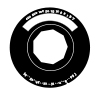
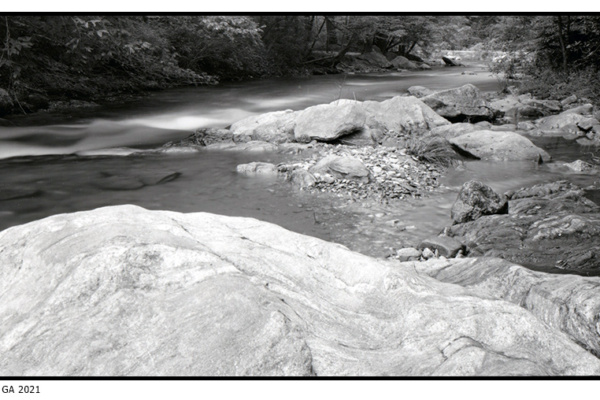
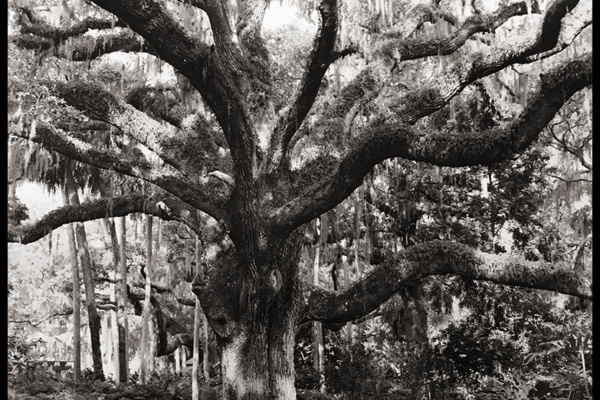
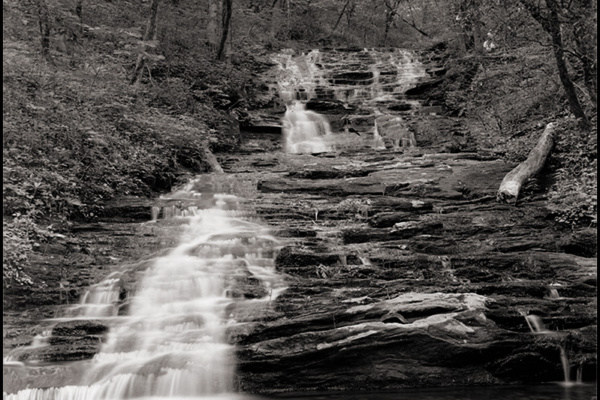
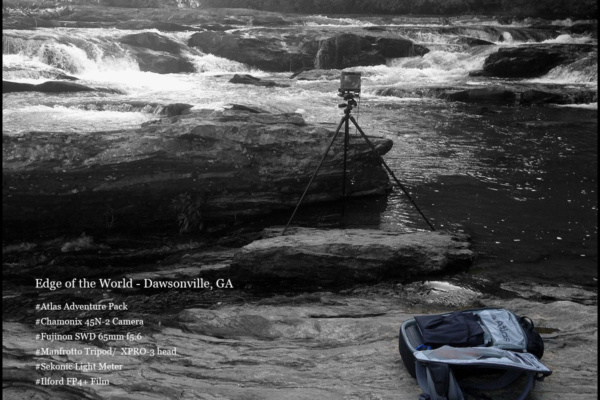
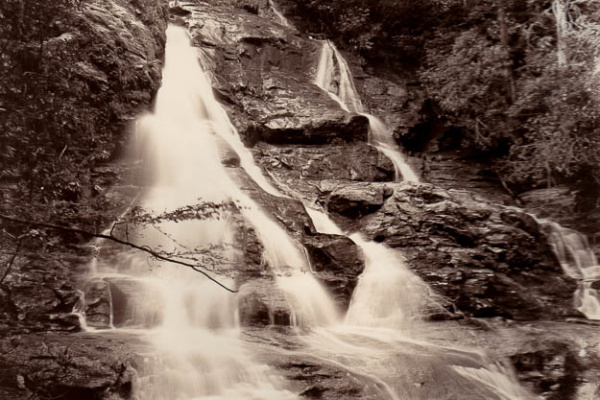
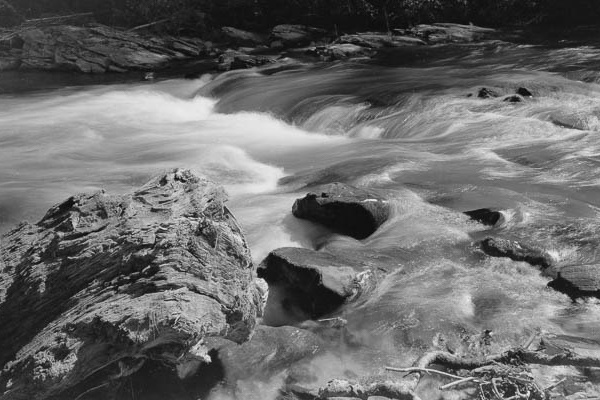
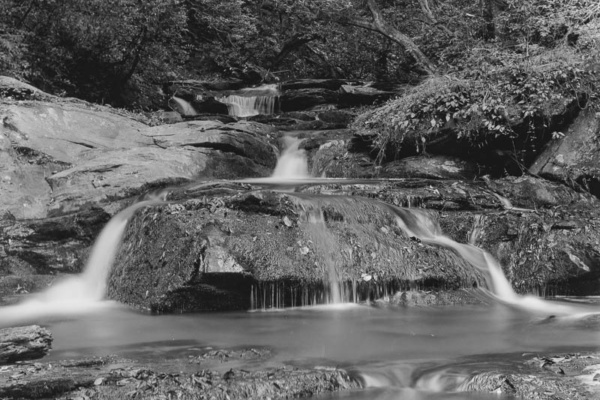
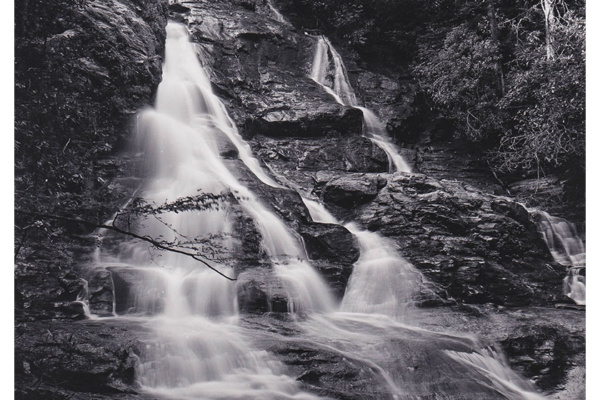
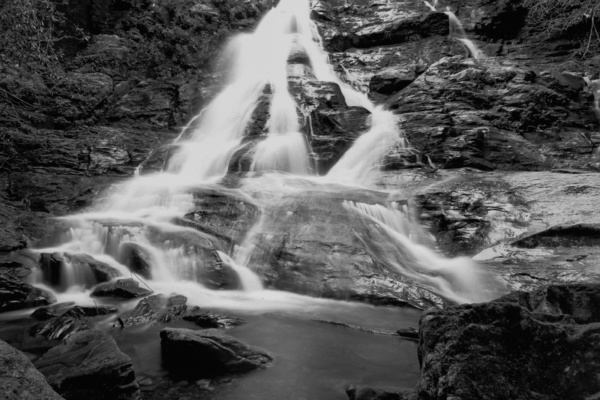

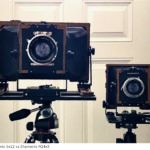 First outing with Chamonix 5×12 and Shimoda Backpack
First outing with Chamonix 5×12 and Shimoda Backpack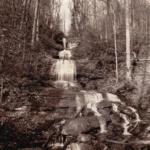 Upper Desoto Falls
Upper Desoto Falls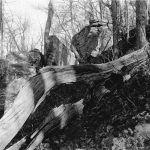 Fallen Tree at Preacher Rock
Fallen Tree at Preacher Rock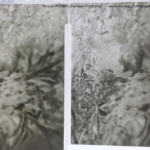 Pyrocat M and FP4 Film test
Pyrocat M and FP4 Film test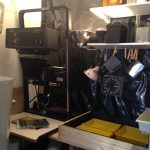 Upscaling in the darkroom
Upscaling in the darkroom
Have you considered mixing your own print developers from raw chemicals? I mix my own and enjoy the ability to tweak formula to something I want. Want it warmer add more Potassium Bromide, Want a softer print developer reduce the Hydroquinone. It can be quite cost effective after the initial outlay as the raw chemicals keep for ages under dry cool conditions.
Yes I have considered it. That is partially why I am testing various developers and papers to determine what I find appealing as well as economical. For Paper developer I am finding it hard to beat Ethol LPD since I can mix it 1:1 or 1:4 and a gallon lasts over a year. I need to research more about the Potassium Bromide effects. I would like my images to have a true warm tone without having to use toner to achieve it. But at the same time Toner is fun too.
It’s a shame that most of the printing papers I grew up with are no longer around. Not many warm tone papers around, have you tried Foma Fomatone 131. , is meant to be a warm toned VC paper. Adox was trying to reintroduce Forte poly warmtone which was a nice paper that toned well, they are building a new coating plant so maybe we will see it again. They also reintroduced Agfa Multicontrast classic, they call it MCC 110, not overly warm but a lovely paper tone wise.
edited